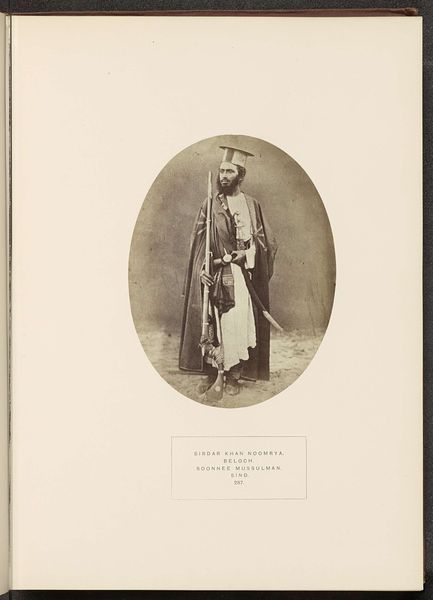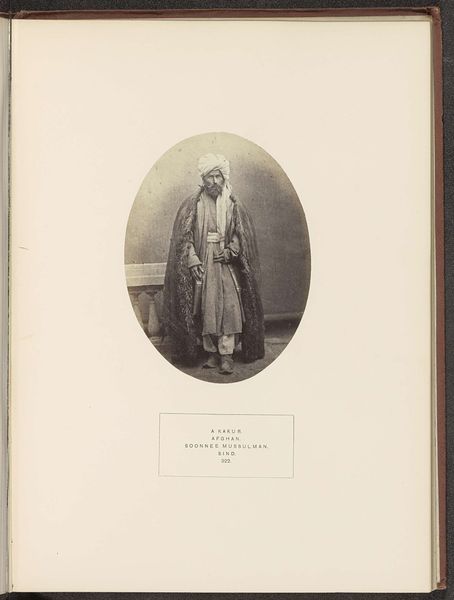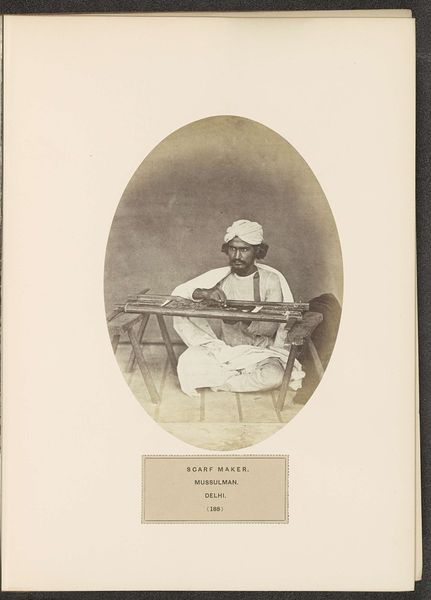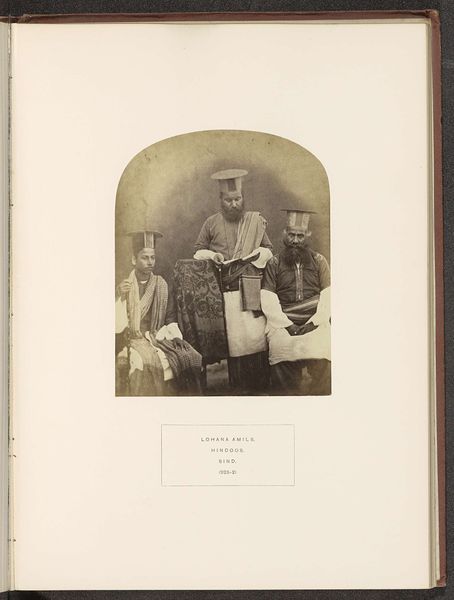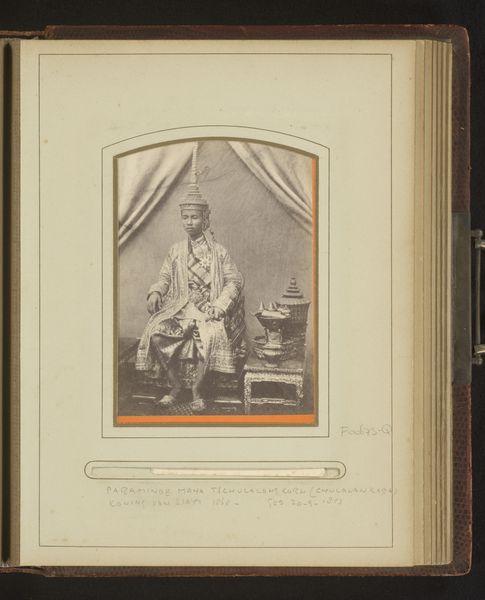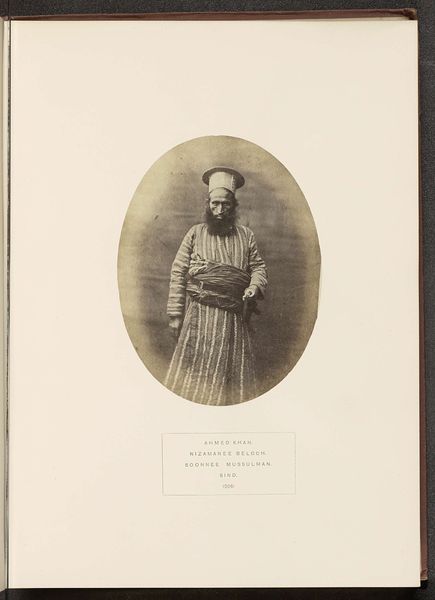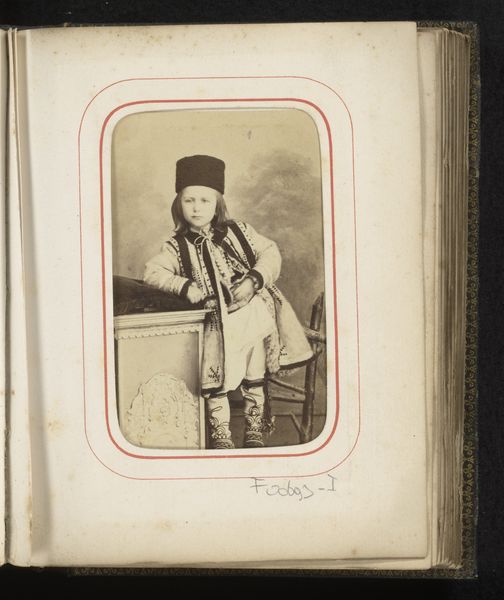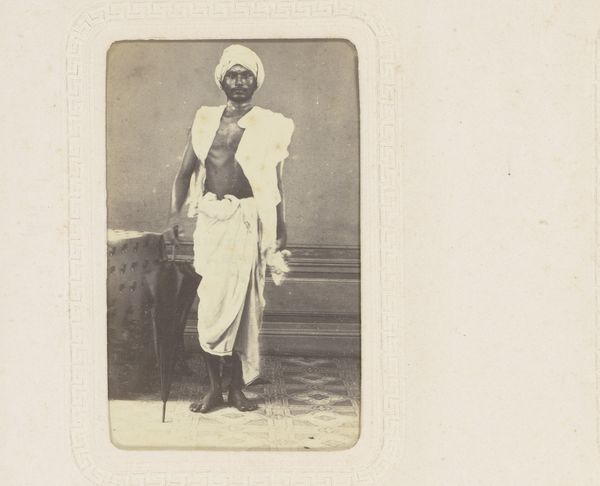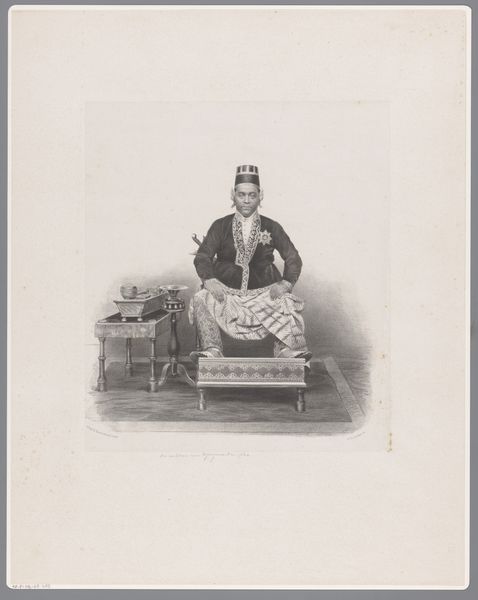
photography, albumen-print
#
portrait
#
african-art
#
photography
#
orientalism
#
albumen-print
Dimensions: height 170 mm, width 123 mm
Copyright: Rijks Museum: Open Domain
Curator: Before us, we have Christiaan Johan Neeb's "Portret van Laloe Soetawang," dating back to before 1897. This particular print is an albumen print, if you get up close you can appreciate the subtle sheen of the material. Editor: There's a stillness in this portrait, a certain formality. I'm struck by how composed Laloe Soetawang appears, yet something about his bare feet brings it all back down to earth—or to the studio floor, perhaps. Curator: The material reality here speaks volumes. Albumen prints were incredibly popular at this time, offering detail and clarity, but requiring an incredibly involved process. It would have required specific expertise, expensive chemicals, and darkroom knowledge. There’s a whole industry of labor hidden within that sepia tone. Editor: True. You can almost sense the weight of the process behind it, how those chemical reactions came together. The photograph also seems so poised to engage in the problematic conventions of orientalism...yet Laloe's gaze holds a strength that resists easy exoticization. It asks you to reconsider those tropes, no? Curator: Absolutely. Though Orientalism informs the perspective and availability of such works, it is compelling to view photographs that challenge imposed hierarchies and reveal resistance. There are visual and performative dynamics that communicate a self-authored representation within a visual culture often determined to diminish the agency of colonized peoples. Editor: I wonder about Laloe’s attire, too. The detail in the brocade jacket, set against the plain background...it invites so many narratives, what he’s communicating, how he saw his place in a shifting colonial landscape. This contrast is powerful. Curator: Absolutely. Photography’s ability to freeze a moment grants these sartorial decisions immense significance. The care taken in his presentation transcends simple documentation, gesturing toward deeper themes of cultural preservation, resistance, and personal identity construction amid cultural displacement. Editor: You have broadened my experience with an array of historical insights. Now, reflecting back on what the image evokes... There’s a quiet power here, a reclaiming of the gaze within what were then, very strict boundaries. It gives the portrait its lingering presence. Curator: Indeed. When you let go of preconceived notions about genre and provenance, "Portret van Laloe Soetawang" emerges as an arresting commentary about individual and collective will amid societal forces of oppression and inequality.
Comments
No comments
Be the first to comment and join the conversation on the ultimate creative platform.
